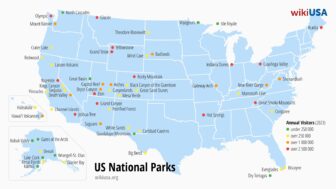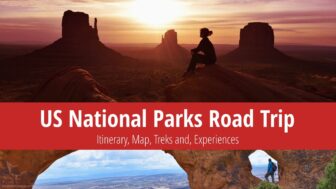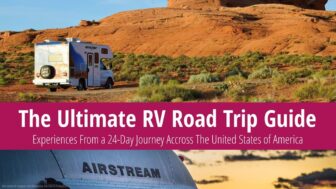When traveling around the USA by car, encountering an automatic transmission is inevitable. Only about 2% of new cars sold in the country have manual transmissions. Rest assured, you’ll adapt to driving without a clutch very quickly; it’s straightforward and comfortable. In this article, you will learn how to operate an automatic vehicle and understand what the letters on the gear lever represent.

-
Table of Contents
How to Drive a Car with an Automatic Transmission
An automatic transmission handles shifting gears on its own, so all you’ll find in the car is the brake pedal (left) and accelerator pedal (right). One foot is enough to control these pedals. I recommend resting the other foot comfortably against the seat to avoid accidentally pressing both pedals when instinctively searching for a nonexistent clutch.
After starting the car, press the brake pedal and select “D” for drive on the shifter. Don’t mistakenly shift into first gear. This gear is specifically for situations like climbing a steep hill, driving in mountainous terrain, or when towing a trailer.
Always engage the brake when starting the vehicle and while shifting gears. If you shift from P to D without pressing the brake pedal, the car might start moving on its own. Some gearshift levers have a safety catch on the side that must be engaged when shifting.
Parking is simple. Just stop and select the letter “P” on the shifter for the parking brake.
-

What Do the Letters on an Automatic Transmission Mean
P – Park
Use the P mode after parking. It acts like a handbrake, preventing the vehicle from moving. Always press the brake pedal when shifting gears.
R – Reverse
Reverse gear – simply shift it into reverse and press the accelerator.
N – Neutral
Neutral – unlike the P position, this does not lock the vehicle in place. Use it when needing to push or pull the car.
D – Drive
Drive – keep this mode engaged for starting and normal driving. The automatic transmission will handle the gear shifting.
F – First
First gear – in some cars, the first gear is marked “1” or “L”. This is the gear you use in winter when driving in the snow or going downhill. It can be used to brake the engine, but it is not suitable for high-speed driving.
S – Sport
Sport mode is only found in high-performance cars. The car will shift up to a higher gear at higher RPMs than in “D” mode. This results in more noise, increased power, and higher fuel consumption. In some cars, “S” indicates the second gear.
L – Low
The engine will run at its highest possible speed, usually in the first gear. Use this mode for engine braking when driving uphill and downhill.
2 – First 2 Gears
The transmission will keep the engine running at the highest possible RPM. While Low mode can use multiple gears, “2” mode strictly uses the two lowest gears. It is useful when driving uphill or in snowy conditions.
3 / D3 – First 3 Gears
This mode will also keep the engine running at its highest possible RPM, using the three lowest gears. This allows for better control of the vehicle’s speed when driving in rainy conditions or when towing a trailer.
W – Winter
Some car brands offer a special winter mode, which, among other features, starts the car in second gear. This reduces the risk of losing traction. It is possible to shift into “D” mode after starting.

 10 Best Photo Places in the USA
10 Best Photo Places in the USA




Discussion (1)
I’ve picked up a lot here, so I’ll try to start contributing as well. When I first rented a car with an automatic, it was recommended to put your left foot up against the seat for getting used to it, especially when driving in town (just like sitting in a chair instead of a car). It’s a perfect aid and has certainly saved me a lot of situations where you subconsciously “pop the clutch” in response, which is tantamount to putting the whole crew in the seat belts, because trust that your left foot is trained to just “depress” and trust that finding the nearest pedal = applying the brake with all your might.